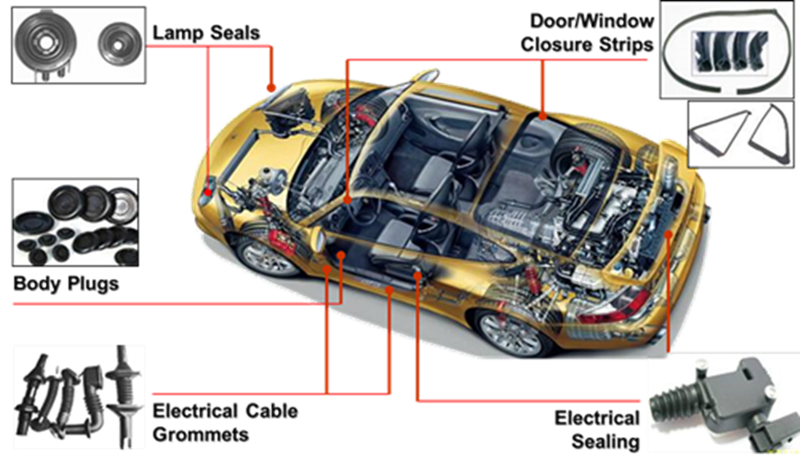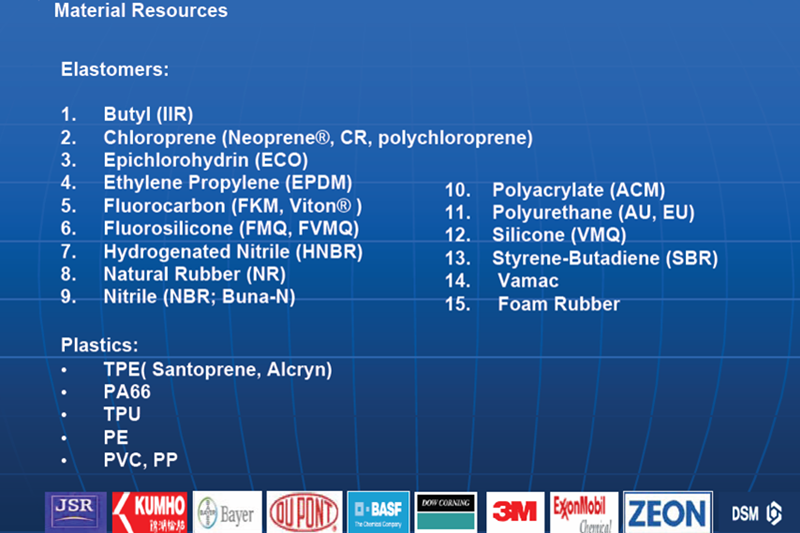Rotary vacuum pump use:
After unpacking, carefully remove the rotary vane vacuum pump, prepare accessories and instructions and keep it for future use. Remove the filler, wipe the surface of the pump dust and dirt. According to the packing list count.
The rotary vane vacuum pump is installed in a clean, well-ventilated, well-lit room that meets the requirements of Article 4. According to the use, the pump should be installed in a well-spaced place for easy operation and maintenance. See the dimensions of the pump. The rotary vane vacuum pump can be placed on a solid and flat ground without special foundation. If it is necessary to fix it, it can be additionally fixed with the screw and the foundation. The size of the foot screw can be seen. When the rotary vane vacuum pump is used near a precision instrument, consider adding shockproof devices.
The pumped container is connected to a rotary vane vacuum pump using a vacuum hose or flange. If flanged, the rubber ring groove is to be provided on the flange. The form and dimensions are shown in Figure 50. The diameter of the pumped container should not be less than the pump size. The diameter of the air inlet should be short and the joints should be short. Otherwise, the speed of pumping can be affected. The leakage of pipes and fittings should be small. The gas volume of the pumped vessel should be compatible with the pumping speed of the pump. See Figure 4 for the pumping speed relationship of the rotary vane vacuum pump. A vacuum valve is recommended between the pump and the pumped container to control the gas flow. For the pump and it is advisable to install a purge valve (or solenoid valve) to bleed the pump while it is stopped, it prevents the return of oil and starts easily.
Connect the power supply according to the voltage and wiring method shown on the motor's nameplate. It is recommended to use a safety device to avoid overloading and to identify the direction of rotation of the motor. It should be consistent with the direction of the arrow on the pump. Remove the vent plug to install the exhaust hood, or remove the cap from the exhaust nozzle. Rotary vane vacuum pumps need to be connected to the water source.
If the pump must be pumped to remove toxic and corrosive ferrous gases, gases that chemically change to vacuum oil, and gases that exceed the normal temperature and dust, it should be installed in the intake pipe, such as neutralization, cooling, filtration, etc. The use of the device, otherwise it will affect the rotary vane vacuum pump performance and life. When the gases harmful to the human body are extracted, the corresponding piping shall be installed and the exhaust gas shall be led outside the work area to be treated.
Note: Care should be taken during installation to prevent iron filings, dirt, dust, etc. from falling into the pump. 1. Precautions for operation of rotary vane vacuum pump:
(1) Intermittently start 1-2 times, observe whether there is abnormal noise and special vibration during operation, and continue running without problems.
(2) Note that the oil level should be between the two oil markings of the sight glass. If the amount of oil is too large, it may cause difficulties such as starting difficulties, oil return, and fuel injection. If less, the vacuum degree will be affected. When the amount of oil is insufficient, oil should be added through the oil hole. Note that the oil level of the pump that has been stopped for a long period of time must be reduced. After the pump is operated for several revolutions, the oil level will rise.
(3) Open the cooling water (4) Open the valve on the inlet of the pump. The size of the opening depends on the situation.
2. For the initial installation of the rotary vane vacuum pump, a trial run should be done first. At this time, the pump should be free of improperly installed vibration and no special impact sound. The motor should not be overloaded, and the oil temperature and ultimate vacuum degree should meet the technical specifications.
3, when the vacuum pump is stopped, the valve on the air inlet mouth should be shut off first, and the air release valve should be used to deflate the pump, then cut off the power supply and stop the water supply.
4ã€Precautions for use of rotary vane vacuum pump:
(1) Always pay attention to the oil level.
(2) Slowly open the valve after starting the pump.
(3) Always pay attention to whether the pump is operating normally, whether there is a special sound, and whether the motor is overloaded.
(4) Note whether the cooling water is interrupted.
(5) Note that the pump temperature does not exceed 40 °C
(6) If the rotary vane vacuum pump temperature drops below 5°C after parking, the pump cold water must be removed.
After unpacking, carefully remove the rotary vane vacuum pump, prepare accessories and instructions and keep it for future use. Remove the filler, wipe the surface of the pump dust and dirt. According to the packing list count.
The rotary vane vacuum pump is installed in a clean, well-ventilated, well-lit room that meets the requirements of Article 4. According to the use, the pump should be installed in a well-spaced place for easy operation and maintenance. See the dimensions of the pump. The rotary vane vacuum pump can be placed on a solid and flat ground without special foundation. If it is necessary to fix it, it can be additionally fixed with the screw and the foundation. The size of the foot screw can be seen. When the rotary vane vacuum pump is used near a precision instrument, consider adding shockproof devices.
The pumped container is connected to a rotary vane vacuum pump using a vacuum hose or flange. If flanged, the rubber ring groove is to be provided on the flange. The form and dimensions are shown in Figure 50. The diameter of the pumped container should not be less than the pump size. The diameter of the air inlet should be short and the joints should be short. Otherwise, the speed of pumping can be affected. The leakage of pipes and fittings should be small. The gas volume of the pumped vessel should be compatible with the pumping speed of the pump. See Figure 4 for the pumping speed relationship of the rotary vane vacuum pump. A vacuum valve is recommended between the pump and the pumped container to control the gas flow. For the pump and it is advisable to install a purge valve (or solenoid valve) to bleed the pump while it is stopped, it prevents the return of oil and starts easily.
Connect the power supply according to the voltage and wiring method shown on the motor's nameplate. It is recommended to use a safety device to avoid overloading and to identify the direction of rotation of the motor. It should be consistent with the direction of the arrow on the pump. Remove the vent plug to install the exhaust hood, or remove the cap from the exhaust nozzle. Rotary vane vacuum pumps need to be connected to the water source.
If the pump must be pumped to remove toxic and corrosive ferrous gases, gases that chemically change to vacuum oil, and gases that exceed the normal temperature and dust, it should be installed in the intake pipe, such as neutralization, cooling, filtration, etc. The use of the device, otherwise it will affect the rotary vane vacuum pump performance and life. When the gases harmful to the human body are extracted, the corresponding piping shall be installed and the exhaust gas shall be led outside the work area to be treated.
Note: Care should be taken during installation to prevent iron filings, dirt, dust, etc. from falling into the pump. 1. Precautions for operation of rotary vane vacuum pump:
(1) Intermittently start 1-2 times, observe whether there is abnormal noise and special vibration during operation, and continue running without problems.
(2) Note that the oil level should be between the two oil markings of the sight glass. If the amount of oil is too large, it may cause difficulties such as starting difficulties, oil return, and fuel injection. If less, the vacuum degree will be affected. When the amount of oil is insufficient, oil should be added through the oil hole. Note that the oil level of the pump that has been stopped for a long period of time must be reduced. After the pump is operated for several revolutions, the oil level will rise.
(3) Open the cooling water (4) Open the valve on the inlet of the pump. The size of the opening depends on the situation.
2. For the initial installation of the rotary vane vacuum pump, a trial run should be done first. At this time, the pump should be free of improperly installed vibration and no special impact sound. The motor should not be overloaded, and the oil temperature and ultimate vacuum degree should meet the technical specifications.
3, when the vacuum pump is stopped, the valve on the air inlet mouth should be shut off first, and the air release valve should be used to deflate the pump, then cut off the power supply and stop the water supply.
4ã€Precautions for use of rotary vane vacuum pump:
(1) Always pay attention to the oil level.
(2) Slowly open the valve after starting the pump.
(3) Always pay attention to whether the pump is operating normally, whether there is a special sound, and whether the motor is overloaded.
(4) Note whether the cooling water is interrupted.
(5) Note that the pump temperature does not exceed 40 °C
(6) If the rotary vane vacuum pump temperature drops below 5°C after parking, the pump cold water must be removed.
As a leading manufacturer of rubber parts, rubber impellers and rubber wheels. We are specialized in the design, manufacture and sale of rubber products to all over the world.
SERVICES OFFERED
Custom-Engineered Rubber Parts for Specific Applications
Linear Analysis
Injection, Compression Molding
Rubber to Metal Bonding
Medical Grade Silicone
Design & Material Assistance
Preprocess and Structure Optimize
Multi-Body Dynamic Analysis
Vibration System Dynamic Modeling
Outside Body Products

Material Resource

Rubber Molding,Automotive Rubber Parts,Impellers and Pumps,Wheels and Castors
Ningbo Expert Mould Plastic Co., Ltd. , https://www.prototypesmaker.com